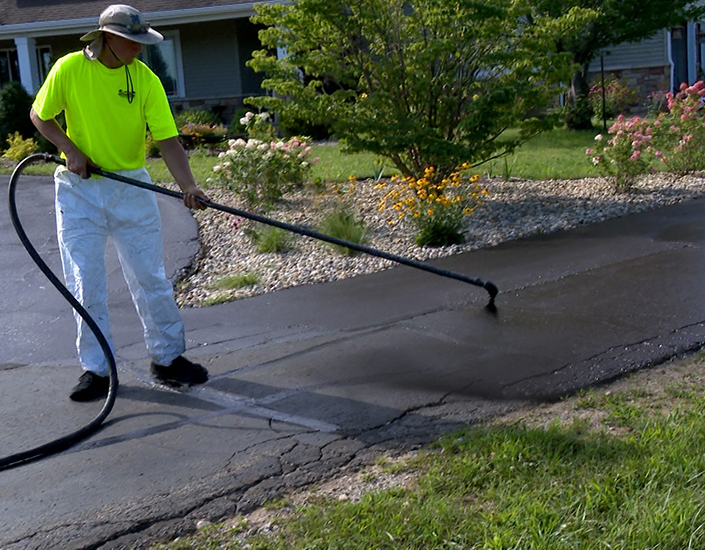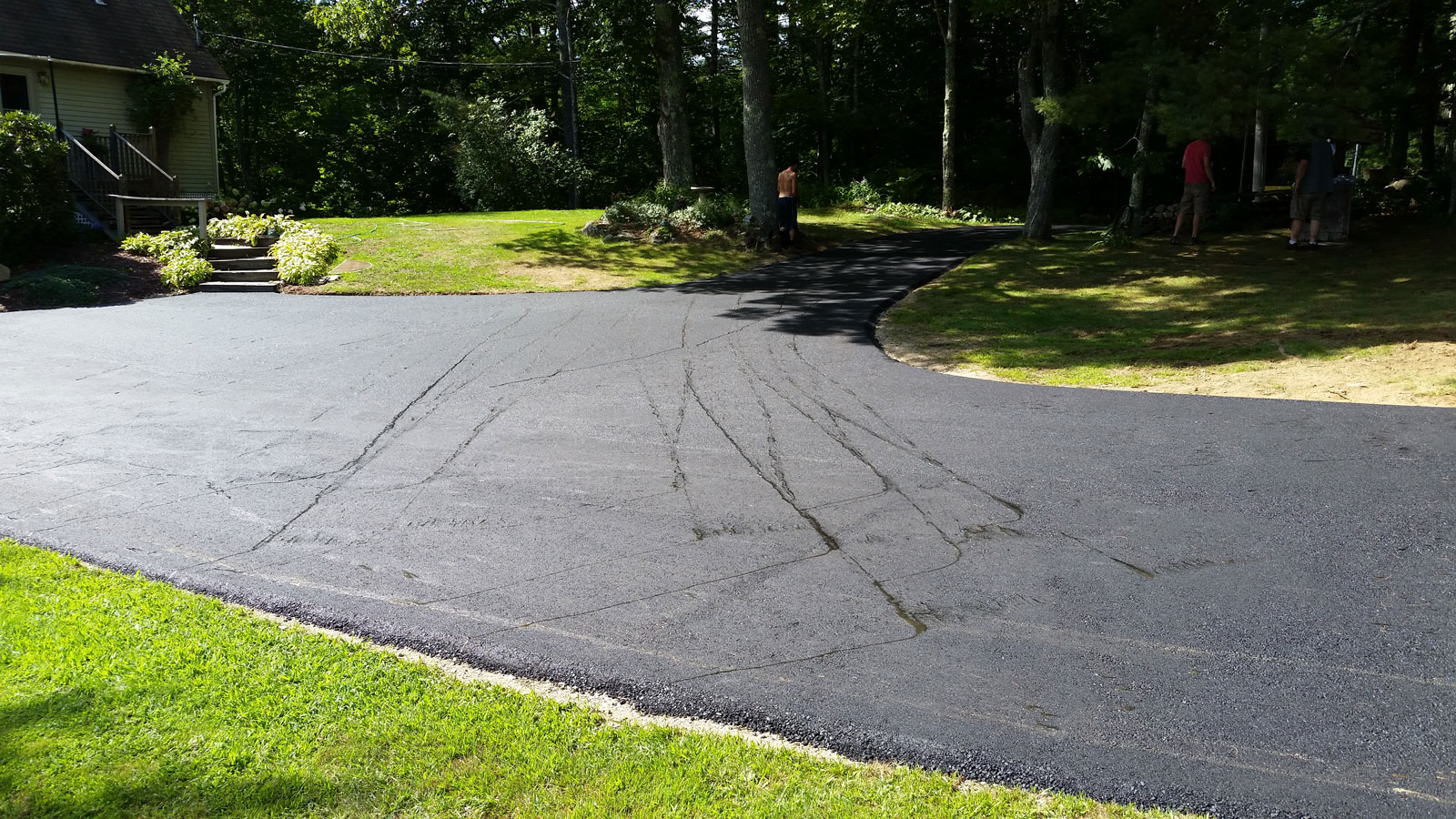Discover the Power of Industrial Parking Lot Leading and Asphalt Sealing
Wiki Article
Warm Mix Asphalt: A Lasting Solution for Pavement
Hot Mix Asphalt (HMA) has become a leading sustainable selection for pavement options, using a myriad of ecological advantages and innovative modern technologies. Its capacity to reuse products and minimize power consumption presents a compelling situation for its fostering in road building and construction tasks. Additionally, the long-lasting performance and resilience of HMA make it a favored alternative for framework advancement. As the need for environment-friendly building and construction methods grows, discovering the subtleties of HMA's sustainability can supply important insights right into the future of sidewalk services.Environmental Benefits of Warm Mix Asphalt

Furthermore, Warm Mix Asphalt helps to reduce metropolitan warmth island results. Its dark color absorbs sunlight, decreasing the amount of heat mirrored back right into the environment compared to lighter-colored pavements. This can lower ambient temperature levels in urban areas, decreasing the need for air conditioning and ultimately reducing power usage.
In addition, Hot Mix Asphalt adds to boosted stormwater management. Its porous nature permits water to recharge and penetrate the sidewalk groundwater materials, lowering runoff and the risk of flooding. These ecological advantages make Hot Mix Asphalt a sustainable choice for leading freeways and roads.
Energy Efficiency in HMA Manufacturing
Is energy efficiency a critical variable in the manufacturing of Hot Mix Asphalt (HMA)? Energy plays a significant duty in the manufacturing of HMA, affecting both cost and environmental sustainability. One vital aspect of power effectiveness in HMA production is the use of cozy mix asphalt (WMA) modern technologies.Additionally, innovations in plant technologies have resulted in even more energy-efficient HMA manufacturing procedures. Modern plants are created with features like recycled asphalt pavement (RAP) processing abilities, effective burner systems, and enhanced insulation, all adding to energy financial savings. By maximizing power usage in HMA manufacturing, the market can minimize its carbon footprint while keeping top quality sidewalk materials. Power effectiveness is, therefore, an essential consideration in ensuring the sustainability of Warm Mix Asphalt production.
Recyclability of Warm Mix Asphalt
The recyclability of Hot Mix Asphalt (HMA) is click to investigate a critical facet of its sustainability and lasting environmental impact. HMA is just one of the most recycled materials in the USA, with over 100 million lots of redeemed asphalt sidewalk (RAP) being reused each year in brand-new pavement building. Reusing HMA provides numerous ecological advantages, such as reducing the requirement for virgin products, reducing power intake throughout manufacturing, and reducing the amount of waste sent to land fills.The process of recycling navigate to this site HMA includes grating the existing sidewalk, squashing it right into smaller pieces, and mixing it with new aggregate and asphalt binder to develop a recycled mix. On the whole, the recyclability of HMA plays a significant role in advertising lasting practices within the pavement sector.

Long-Term Efficiency of HMA
Asphalt sidewalks demonstrate sturdiness and resilience over an extensive period, showing the long-lasting efficiency of Hot Mix Asphalt (HMA) Furthermore, innovations in HMA innovation, such as the use of polymer-modified binders and cozy mix asphalt, have further enhanced the longevity and longevity of HMA pavements. By prioritizing quality building and construction and upkeep techniques, HMA proceeds to verify itself as a cost-efficient and lasting service for long-lasting sidewalk infrastructure.
HMA: Sturdiness and Sustainability
Showing both toughness and sustainability, Warm Mix Asphalt (HMA) has ended up being a keystone in the construction of long-lasting sidewalk infrastructures - commercial parking lot paving. HMA's resilience comes from its ability to endure heavy lots, harsh climate condition, and high website Clicking Here traffic quantities, making it a reputable choice for highways, freeways, and airport runways. The make-up of HMA, which commonly includes accumulations, binder, and filler, plays a crucial duty in boosting its durability and resistance to tear and use
Moreover, HMA's sustainability depends on its recyclability and energy-efficient manufacturing procedure. The capacity to reuse reclaimed asphalt pavement (RAP) in brand-new HMA blends reduces the demand for virgin materials and decreases the environmental effect of pavement construction and upkeep. Furthermore, the power efficiency of creating HMA exists in its reduced blending temperature levels compared to various other sidewalk products, bring about minimized energy intake and greenhouse gas discharges.
Conclusion
To conclude, warm mix asphalt (HMA) uses a sustainable service for sidewalk with its eco-friendly features. HMA's recyclability, energy performance in production, and lasting durability make it an environment-friendly selection for roadway building. By saving natural deposits, minimizing waste, and reducing greenhouse gas emissions, HMA plays an essential function in promoting sustainability in facilities development. Its capability to alleviate urban heat island effects further underscores its importance in producing ecologically conscious and durable sidewalk systems.
HMA is one of the most recycled materials in the United States, with over 100 million loads of recovered asphalt sidewalk (RAP) being recycled each year in brand-new pavement construction.The procedure of reusing HMA includes crushing the existing pavement, squashing it right into smaller pieces, and mixing it with brand-new aggregate and asphalt binder to create a recycled mix.Asphalt pavements show toughness and durability over an extended duration, reflecting the lasting performance of Warm Mix Asphalt (HMA) In addition, advancements in HMA innovation, such as the usage of polymer-modified binders and warm mix asphalt, have even more enhanced the resilience and longevity of HMA pavements. The capacity to recycle recovered asphalt sidewalk (RAP) in brand-new HMA blends lowers the need for virgin products and reduces the ecological influence of pavement building and maintenance.
Report this wiki page